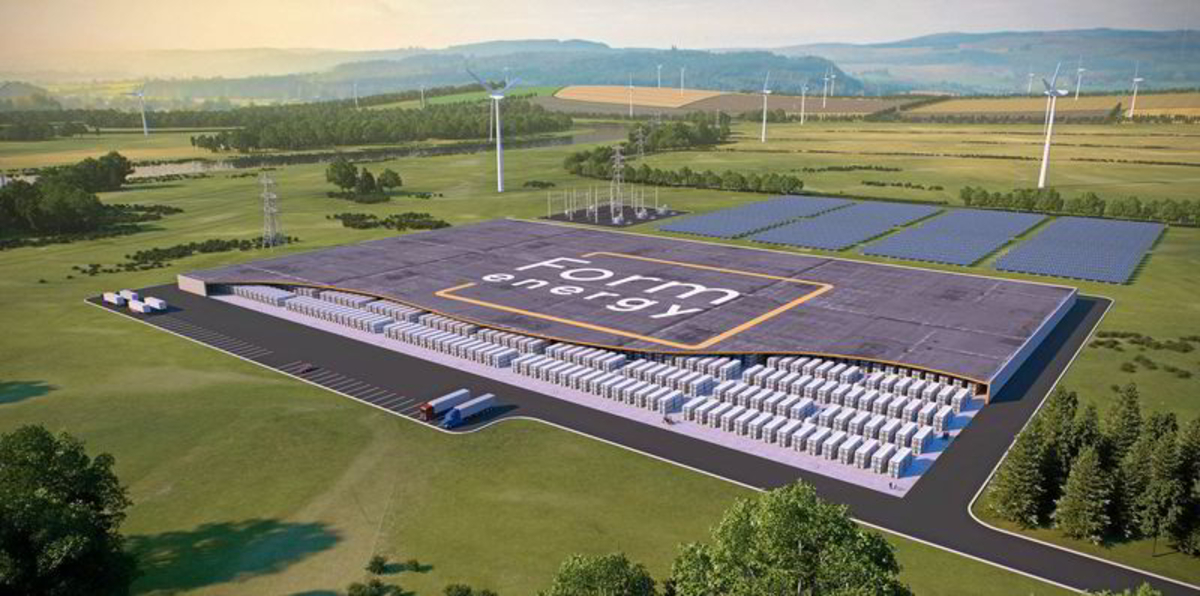Sign up for daily news updates from CleanTechnica on email. Or follow us on Google News!
Utility-scale energy storage is a vital part of the clean energy revolution. There is a critical difference between thermal generation of electricity and electricity from wind and solar. A thermal generator can run for as long as there is fuel to burn. The downside is that the price of that fuel can vary. When it gets more expensive, so does the electricity produced.
With wind and solar, renewable electricity is generated when the wind blows or the sun shines. What is needed is a way to store some of the electricity for later use. That’s where utility-scale batteries come in. They have become extremely popular in the last few years. In 2020, California had 500 MW of battery storage. Today, it has 5,000 MW, representing almost 8% of the state’s nameplate capacity, according to the California Independent System Operator.
That is wonderful news. Abundant solar power flows into those batteries during the day and gets released in the afternoon and early evening to keep the lights on after the sun sets. There is one drawback, however. Most grid-scale energy storage relies on lithium-ion batteries, which can only supply electricity back to the grid for 2 to 4 hours. After that, the burden of keeping the grid supplied with electricity falls back on traditional sources — thermal, nuclear, and hydro.
Long-Duration Energy Storage Grants
On September 23, 2023, the US Department of Energy announced it has selected nine proposals for long-duration energy storage test projects. Those nine will share a total of $325 million in funding to help them prove they are viable. The DOE defines long-duration storage as anything that can supply electricity back to the grid for 10 hours or more. The money is primarily coming from the Bipartisan Infrastructure Law, one of the signature accomplishments of the Biden administration.
The DOE views long-duration storage as an essential part of making wind and solar energy a reliable, round-the-clock power source. Its goal is to see costs for long-duration storage drop 90% by the end of this decade, which would make it a cost effective tool for the low carbon grid of the future.
Many of the technologies have been in development for years, if not decades. But utilities and private investors have been slow to sink their money into long-duration technologies that haven’t proven they can operate at scale.
The DOE awards signal that the “technological powerhouse” of DOE scientists and researchers has scrutinized these technologies and found them worthy of investment, said Under Secretary for Infrastructure David Crane in an interview with Canary Media.
He called the awards a “Good DOE Housekeeping seal of approval” for novel forms of storage. “These projects were picked after an extensive — and I mean extensive — internal review process,” said Crane, who oversees the Office of Clean Energy Demonstrations. “If we’re backing it, that’s a good sign.”
Two of the winners, ReJoule and Smartville, won funding to re-purpose used electric car batteries for resilient power in low income communities. Others use electro-chemical approaches that promise advantages over conventional lithium-ion batteries.
Urban Electric Power will test its zinc manganese dioxide batteries in New York. Five rural electric cooperatives will try out vanadium flow batteries from Invinity. Zinc bromide batteries will deliver backup power to a children’s hospital in Madera, California. NextEra Energy Resources will test zinc bromide batteries supplied by Eos Energy Storage in Wisconsin and Oregon. Eos has recently received a $400 million loan guarantee from the Department of Energy.
The remote community of Healy, Alaska, will transition from coal power to renewables with the help of a “pumped thermal energy storage” system from legacy company Westinghouse and Echogen.
Energy Dome Comes To America
Italian startup Energy Dome won funding for its first US project for three of Wisconsin’s largest utilities. CleanTechnica reported on Energy Dome last year. Its CEO and inventor, Claudio Spadacini, says it is a closed system that uses excess renewable energy to compress carbon dioxide until it is condensed into a liquid. The heat from this compression is captured and stored to be used again later.
When it is time to discharge the energy, the stored heat is used to evaporate the liquid carbon dioxide, which then turns back into a gas that spins a turbine as it returns to the dome. The system only requires steel, carbon dioxide, and some water. The closed loop system generates no emissions.
“Ironically, we use CO₂ to make our system work,” Spadacini says, adding that it’s only needed to kickstart the system, which is designed to last around 30 years. “Our system is fully closed. We add no emissions to the atmosphere. It’s just a black box which is able to charge with the surplus electricity when there is an abundance of it.”
“The CO₂ battery is fully sustainable and fully recyclable,” he says. “We just use steel to produce the CO₂ battery and we use water only once to fill our water tank. We do not use water during the operation of the CO₂ battery and we just use a small amount of CO₂ to charge the battery at the beginning without any consumption of CO₂ during the operation.”
Form Energy Completes The List

Image courtesy of Form Energy
Last but not least, Form Energy won the only award for storage that can discharge for multiple days straight. The company will install its iron-air batteries at retiring coal plants owned by utility Xcel Energy in Colorado and Minnesota.
The Xcel partnership was announced in January and now it has the financial support it needs. Researchers from Argonne National Lab will “measure, assess, and validate the technical and social impacts of the project.” Form separately won a contract with Virginia utility Dominion Energy this week, along with Eos.
Form Energy is headed by Mateo Jaramillo, who left Tesla several years ago to head up the company, which is one of many MIT spinoffs created by serial entrepreneur Yet-Ming Chiang. We recently reported on another start up from Chiang’s fertile brain, Sublime Systems, that makes nearly zero emissions cement at room temperature using electricity.
Making Federal Dollars Work Harder
The Bipartisan Infrastructure Law calls for a 50/50 cost share on these projects, meaning the DOE will only fund half. But Crane said DOE was able to stretch taxpayer dollars further. After the $325 million gets distributed, private capital will supply the remainder of the money needed to build all these projects. It is expected the final total will be close to $800 million.
When asked which of the technologies he found most promising, Crane said coyly, “I’m an ecumenical guy. I love all nine projects, and we will be zealous in pursuit of all.” The ultimate goal is to be able to replicate in practice what these companies have achieved in their laboratories.
The government funding is intended to take technologies that haven’t reached wide commercial adoption and convince private investors, as well as utility regulatory commissions, that these are trustworthy investments that will work the way they’re supposed to. If that succeeds, utility companies will greenlight more of these projects in the near future.
First, the applicants need to complete negotiations with the DOE to finalize the awards. Then they must actually build their grant-funded projects, and the DOE says that could take four to five years for permitting, design, and construction. Crane sounded hungry to get as many as possible done sooner.
“My personal mission at the DOE is to move into a fast-track posture,” Crane said. “If a company says they can move faster, we’re going to spend a lot of time making sure we don’t slow them down.” Ideally, given the intensive vetting from the national labs, a wave of follow-on projects using these technologies can get rolling even before the first wave is built, he added.
The Takeaway
These sorts of investments are precisely what America needs reduce its greenhouse gas emissions while make sure that everyone has access to reliable, dispatchable zero emissions electricity in the future. They are also precisely the sorts of government action that right wing extremists like the laughably misnamed “Freedom Caucus” in the House of Representatives and presidential candidates like Ron DeSantis want shut down so the oil and gas companies can continue to sell their death-dealing products to the public,
In a little over a year, the American people will get to choose whether to go boldly into the future or revert to an America stuck in the last century. Elections matter, and the 2024 election will present voters with a stark choice. It’s not too early to start planning how you and those in your circle of influence will cast their votes.
Vote wisely. Please.
Have a tip for CleanTechnica? Want to advertise? Want to suggest a guest for our CleanTech Talk podcast? Contact us here.
EV Obsession Daily!
I don’t like paywalls. You don’t like paywalls. Who likes paywalls? Here at CleanTechnica, we implemented a limited paywall for a while, but it always felt wrong — and it was always tough to decide what we should put behind there. In theory, your most exclusive and best content goes behind a paywall. But then fewer people read it!! So, we’ve decided to completely nix paywalls here at CleanTechnica. But…
Thank you!
Tesla Sales in 2023, 2024, and 2030
CleanTechnica uses affiliate links. See our policy here.




